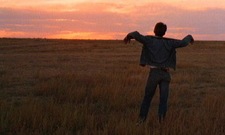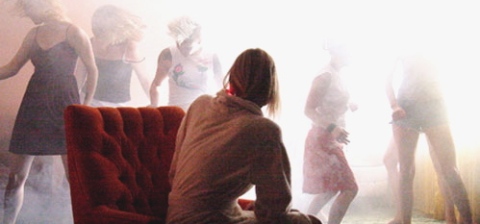Jesus
“For God so loved the world, that He gave His only begotten Son, that whoever believes in Him shall not "perish, but have eternal life. For God did not send the Son into the world to judge the world, but that the world might be saved through Him.” (John 3:16-17)
Martin Buber
“In the relation to God, unconditional exclusiveness and unconditional inclusiveness are one. For those who enter into the absolute relationship, nothing particular retains any importance—neither things nor beings, neither earth nor heaven—but everything is included in the relationship. For entering into the pure relationship does not involve ignoring everything but seeing everything in the You, not renouncing the world but placing it upon its proper ground. Looking away from the world is no help toward God; staring at the world is no help either; but whoever beholds the world in him stands in his presences…” (from
I and Thou)
C.S. Lewis
“When I attempted a few minutes ago, to describe our spiritual longings, I was omitting one of their most curious characteristics. We usually notice it just as the moment of vision dies away, as the music ends, or as the landscape loses the celestial light… For a few minutes we have had the illusion of belonging to that world. Now we wake to find that it is no such thing. We have been mere spectators. Beauty has smiled, but not to welcome us; her face turned in our direction, but not to see us. We have not been accepted, welcomed, or taken into the dance. We may go when we please, we may stay if we can, no one cares. Now, a scientist may reply that since most of the things we call beautiful are inanimate it is not very surprising that they take no notice of us. That, of course, is true. It is not the physical objects that I am speaking of, but that indescribable Something of which they become for a moment the messengers. And part of the bitterness which mixes with the sweetness of that message is due to the fact that it so seldom seems to be a message intended for us, but rather something we have overheard. By bitterness I mean pain, not resentment. We should hardly dare to ask that any notice be taken of ourselves. But we pine. The sense that in the universe we are treated as strangers, the longing to be acknowledged, to meet with some response, the bridge some chasm that yawns between us and reality, is part of our inconsolable secret.” (from
The Weight of Glory)
Terrence Malick
 Badlands
Badlands (1972)
 Days of Heaven
Days of Heaven (1978)
 The Thin Red Line
The Thin Red Line (1998)
 The New World
The New World (2005)
Martin Heidegger
“Truth is the truth of Being. Beauty does not occur alongside and apart from this truth. When truth sets itself into the work, it appears. Appearance—as this being of truth in the work and as work—is beauty. Thus the beautiful belongs to the advent of truth, truth’s taking of its place. It does not exist merely relative to pleasure and purely as its object.” (from “The Origin of the Work of Art.”)
Saint Paul
“Now we see but a poor reflection as in a mirror; then we shall see face to face. Now I know in part; then I shall know fully, even as I am fully known.” (I Corinthians 13:12)
Marshall McLuhan
“All media work us over completely. They are so pervasive in their personal, political, economic, aesthetic, psychological, moral, ethical, and social consequences that they leave no part of us untouched, unaffected, unaltered.” (from
The Medium is the Massage)
Sufjan Stevens
And in my best behavior
I am really just like him
Look beneath the floorboards
For the secrets I have hid
(from “John Wayne Gacy, Jr.”)
F. Scott Fitzgerald
“And as I sat there brooding on the old unknown world, I thought of Gatsby’s wonder when he first picked out the green light at the end of Daisy’s long dock. He had come a long way to this blue lawn, and his dream must have seemed so close that he could hardly fail to grasp it, He did not know that it was already behind him, somewhere back in that vast obscurity beyond the city, where the dark fields of the republic rolled on under the night.” (from
The Great Gatsby)
Yasujiro Ozu
 Tokyo Story
Tokyo Story (1953)
George Steiner
“All representations, even the most abstract, infer a rendezvous with intelligibility or, at the least, with a strangeness attenuated, qualified by observance and willed form. Apprehension (the meeting with the other) signifies both fear and perception. The continuum between both, the modulation from one to the other, lie at the source of poetry and the arts.” (from
Real Presences)
Paul Tillich
“What is the nature of a being that is able to produce art? Man is finite. He is, as one could say, mixed of being and nonbeing. Once he was not. Now he is and some time he will not be. He is not by himself, but thrown into existence and he will be thrown out of existence and cease to be for himself. He is delivered to the flux of time which runs from the past to the future through the ever-moving point which is called the present. He is aware of the infinite. He is aware that he belongs to it. But he is also aware that he is excluded from it… Out of the anxiety, and the double awareness that we are finite and that we belong to infinity from which we are excluded, the urge arises to express the essential unity of that which we are in symbols which are religious and artistic.” (from
On Art and Architecture)
Dorothy Sayers
“Poets have, indeed, often communicated in their own mode of expression truths identical with the theologians’ truths; but just because of the difference in the modes of expression, we often fail to see the identity of the statements.” (from
The Mind of the Maker)
Over the Rhine
What a beautiful piece of heartache this has all turned out to be.
Lord knows we've learned the hard way all about healthy apathy.
And I use these words pretty loosely.
There's so much more to life than words.
(from “Latter Days”)
Soren Kierkegaard
“He will grant thee a hiding place within Him, and once hidden in Him he will hide thy sins. For He is the friend of sinners... He does not merely stand still, open His arms and say, 'Come hither'; no, he stands there and waits, as the father of the lost son waited, rather He does not stand and wait, he goes forth to seek, as the shepherd sought the lost sheep, as the woman sought the lost coin. He goes--yet no, he has gone, but infinitely farther than any shepherd or any woman, He went, in sooth, the infinitely long way from being God to becoming man, and that way He went in search of sinners.” (from
Training in Christianity)
Richard Linklater
 Before Sunrise
Before Sunrise (1995)
 Waking Life
Waking Life (2001)
 Before Sunset
Before Sunset (2004)
George MacDonald
“In what belongs to the deeper meanings of nature and her mediation between us and God, the appearances of nature are the truths of nature, far deeper than any scientific discoveries in and concerning them. The show of things is that for which God cares most, for their show is the face of far deeper things than they; we see in them, in a distant way, as in a glass darkly, the face of the unseen. It is through their show, not through their analysis, that we enter into their deepest truths. What they say to the childlike soul is the truest thing to be gathered of them.” (from
The Voice of Job)
Emily Dickinson
The Bustle in a House
The Morning after Death
Is solemnest of industries
Enacted opon Earth –
The Sweeping up the Heart
And putting Love away
We shall not want to use again
Until Eternity
John Steinbeck
“In uncertainty I am certain that underneath their topmost layers of frailty men want to be good and want to be loved. Indeed, most of their vices are attempted short cuts to love. When a man comes to die, no matter what his talents and influence and genius, if he dies unloved his life must be a failure to him and his dying a cold horror.” (from
East of Eden)
Bob Dylan
He woke up, the room was bare
He didn't see her anywhere.
He told himself he didn't care,
pushed the window open wide,
Felt an emptiness inside
to which he just could not relate
Brought on by a simple twist of fate.
(from “Simple Twist of Fate”)
Walker Percy
“What is the malaise? You ask. The malaise is the pain of loss. The world is lost to you, the world and the people in it, and there remains only you and the world and you no more able to be in the world than Banquo’s ghost.” (from
The Moviegoer)
Sofia Coppola
 Virgin Suicides
Virgin Suicides (2000)
 Lost in Translation
Lost in Translation (2003)
 Marie Antoinette
Marie Antoinette (2006)
Kathleen Norris
“Church is to be participated in and not consumed. The point is not what one gets out of it, but the worship of God; the service takes place both because of and despite the needs, strengths, and frailties of the people present. How else could it be?” (from
Dakota)
Marilynne Robinson
“Whenever I think of Edward, I think of playing catch in a hot street and that wonderful weariness of the arms. I think of leaping after a high throw and that wonderful collaboration of the whole body with itself and that wonderful certainty and amazement when you know the glove is just where it should be. Oh, I will miss the world!” (from
Gilead)
N.T. Wright
“Preaching the gospel means announcing Jesus as Lord of the world; and, unless we are prepared to contradict ourselves with every breath we take, we cannot make that announcement without seeking to bring that lordship to bear over every aspect of the world.” (from
What Saint Paul Really Said).
David Bazan
It's weird to think of all the things
That have not been keeping up with the times
It's ten o' clock the sun is down
Just begun to set the western hills on fire
I hear that you don't change
How do you expect to keep up with the trends
You won't survive the information age
Unless you plan to change the truth to accommodate the brilliance of man
The brilliance of man
(from “Letter From a Concerned Follower”)
G.K. Chesterton
“Gazing at some detail like a bird or a cloud, we can all ignore its awful blue background; we can neglect the sky; and precisely because it bears down upon us with an annihilating force it is felt as nothing. A thing of this kind can only be an impression and a rather subtle impression; but to me it is a very strong impression made by pagan literature and religion. I repeat that in our special sacramental sense there is, of course, the absence of the presence of God. But there is in a very real sense the presence of the absence of God. We feel it in the unfathomable sadness of pagan poetry; for I doubt if there was ever in all the marvelous manhood of antiquity a man who was happy as St. Francis was happy.” (from
The Everlasting Man)
Gus Van Sant
 Elephant
Elephant (2003)
 Paranoid Park
Paranoid Park (2008)
Solomon
"I have seen the task which God has given the sons of men with which to occupy themselves. He has made everything appropriate in its time. He has also set eternity in their heart, yet so that man will not find out the work which God has done from the beginning even to the end. I know that there is nothing better for them than to rejoice and to do good in one's lifetime; moreover, that every man who eats and drinks sees good in all his labor--it is the gift of God. I know that everything God does will remain forever; there is nothing to add to it and there is nothing to take from it, for God has so worked that men should fear Him. That which is has been already and that which will be has already been, for God seeks what has passed by." (Ecclesiastes 3:10-15).
Jack Kerouac
“What is that feeling when you’re driving away from people and they recede on the plain till you see their specks dispersing?—it’s the too-huge world vaulting us, and it’s good bye. But we lean forward to the next crazy venture beneath the skies.” (from
On the Road)
St. Augustine
"Thou hast made us for Thyself, O Lord, and our hearts are restless until they find their rest in Thee..."
Martin Luther
“Unless I am convinced by proofs from Scriptures or by plain and clear reasons and arguments, I can and will not retract, for it is neither safe nor wise to do anything against conscience. Here I stand. I can do no other. God help me. Amen."
Jean-Pierre and Luc Dardenne
 The Son
The Son (2002)
 The Child
The Child (2005)


















 ;
;




















